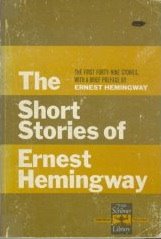 Writers are notorious time wasters. In moments of sheer crisis, we'll find anything to keep us from the unrelenting blank page. Immaculate kitchens, extravagant meals, spotless carpet vacuumed three times a day, these belong to the writer.
Writers are notorious time wasters. In moments of sheer crisis, we'll find anything to keep us from the unrelenting blank page. Immaculate kitchens, extravagant meals, spotless carpet vacuumed three times a day, these belong to the writer.That means we'll look for any excuse, and if we're in between delicate words in a carefully crafted sentence and don't want to pick up a scrub brush, we read; books on writing are the biggest indulgence of this nasty habit.
Most books on writing read like memoirs. Said author did this, then did that, worked really hard and got published on a stroke of luck, and though this may be true, you learn nothing about the craft. Stephen King's On Writing is, I hate to say, one of my favorite Stephen King books, because you learn where he was in life when he was writing some of his biggest bestsellers (all of them?), but there's no lesson, only unpractical life stories. Other books are similar. Stein On Writing is different. It directly addresses what you should be thinking about when you are writing. It tackles the writer's job, not the writer's life.
Certain chapters are noticeably lacking in depth and examples. Stein talks about "liposuctioning flab", and would have done well to shave the chapters on "Particularity" and "Guts". Stein shamelessly plugs his own work towards the end of the book, but even so, he offers practical advice and relatable, usable techniques to get your story down on paper. Make your characters interesting by giving them a particularity, he says. His most important lesson is the best learned: as a writer you have to be conscious of your audience, you have to work at manipulating the pages to keep them interested. He suggests ways to keep the tension high and the suspense long, and stresses that creating tension and suspense are keys to a good story. If you want to tell stories but aren't sure how (and never took a creative writing class, like me) you'll find this book especially helpful.
There are few books on writing that offer solid practical advice into the hows and whys of the craft (The Lie That Tells a Truth, Writing In General and the Short Story In Particular), and Stein On Writing gladly joins them on my bookshelf for the next time I'm feel particularly constructive, can't seem to find the right word, and need some inspiration to find it.
The cover's all about writing. No pictures, just words. I like it!



